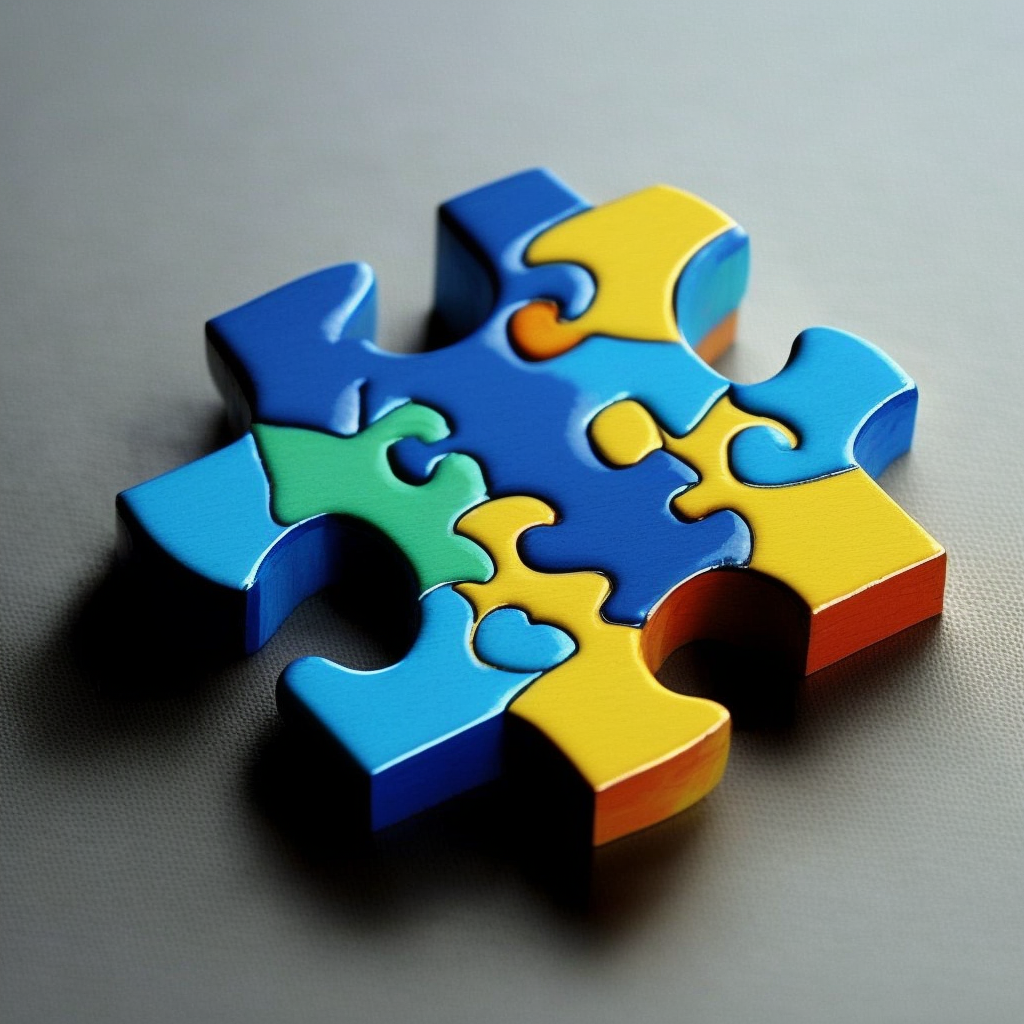The Autism Puzzle Piece: History and Controversy

TL;DR: Why the Puzzle Piece?
- Origin: First used in 1963 by the National Autistic Society (NAS) in the UK.
- Original Meaning: It was chosen to represent the complex, multi-faceted nature of autism and the ongoing search for understanding, answers, and solutions.
- Symbolism: It also represents inclusion and the importance of supporting individuals with autism as unique pieces of a community puzzle.
- Controversy: The symbol faces criticism because some in the autism community feel it suggests autistic people are “incomplete” or need to be “solved,” perpetuating negative stereotypes.
- Current Use: Despite the backlash, the puzzle piece remains a widely recognized and utilized symbol by many families and advocacy organizations globally.
The puzzle piece is a widely recognized symbol of autism, and for a good reason. It perfectly captures the complex and multi-faceted nature of the condition and the ongoing search for answers and solutions.

Autism is a developmental disorder that affects how a person communicates and interacts. It is a spectrum disorder, meaning that its symptoms and severity can vary significantly from person to person. For example, some individuals with autism may have difficulty with social interactions. They might also struggle with communication and repetitive behaviors. Others may have milder symptoms.
The puzzle piece symbol was first used to represent autism in 1963. The National Autistic Society (NAS) introduced it in the United Kingdom. The organization chose the puzzle piece because it captures the complexity of autism. It also represents the challenges that individuals with autism and their families face.
The puzzle also represents the ongoing search for answers and solutions in autism research. Just like a puzzle, researchers consistently gather and rearrange pieces of information. Their goal is to understand autism better. In addition, the puzzle symbolizes the ongoing quest for understanding and support for individuals with autism.

The puzzle piece is also a symbol of inclusion and support. Each person with autism is unique. They are an important piece of the puzzle. It is essential to include and support them in their communities. The puzzle shows how important it is to come together. We must work as a team to help individuals with autism and their families.
In recent years, the puzzle piece symbol has come under criticism from some individuals and organizations in the autism community. Some argue that the character perpetuates negative stereotypes about autism. They believe it reinforces the idea of individuals with autism as being “broken” or “incomplete.”
The puzzle piece symbol is still widely recognized. It is used by many in the autism community. This includes individuals with autism, their families, and advocacy organizations. It remains a powerful and fitting symbol for autism and the ongoing search for understanding and support.
In conclusion, the puzzle piece is a fitting symbol for autism. It captures the complexity and multi-faceted nature of the condition and the ongoing search for answers and solutions. It also represents the importance of inclusion and support for individuals with autism and their families. Despite some criticism, the puzzle piece remains a widely recognized and powerful symbol for autism.
What does the autism puzzle piece mean?

The autism puzzle piece is a widely recognized symbol of autism. It represents the complex and multi-faceted nature of the condition. It also symbolizes the ongoing search for answers and solutions in the field of autism research. In addition, the puzzle piece symbolizes the importance of inclusion. It also represents support for individuals with autism and their families. The idea of coming together as a team is part of its symbolism. It is about better understanding and supporting those with autism. Despite some criticism, the puzzle remains a powerful and fitting symbol for autism.
Is the puzzle piece bad for autism?
Some individuals and organizations in the autism community have criticized the puzzle piece symbol for autism. Some argue that it perpetuates negative stereotypes about autism. They believe it reinforces the idea of individuals with autism as being “broken” or “incomplete.” However, the puzzle piece symbol is still widely recognized in the autism community. Many individuals with autism, their families, and advocacy organizations use it. It remains a powerful and fitting symbol for autism and the ongoing search for understanding and support.
🧩 Frequently Asked Questions (FAQ)
Who first used the puzzle piece as a symbol for autism?
The puzzle piece was originally introduced in 1963 by the **National Autistic Society (NAS)** in the United Kingdom. It was initially used on the organization’s logo.
What was the original intended meaning of the puzzle piece symbol?
It was chosen to represent the **complex and multi-faceted nature** of autism and the **ongoing search for answers and solutions** through research. It also symbolized the importance of inclusion, with each person being a unique piece of the human puzzle.
Why do some people in the autism community criticize the puzzle piece?
Critics argue that the puzzle piece reinforces negative stereotypes by suggesting that autistic individuals are “broken,” “incomplete,” or that autism is a problem that needs to be “solved” or “cured.”
What is the preferred alternative symbol for autism or neurodiversity?
Many self-advocates and organizations prefer the **rainbow infinity symbol (♾️)**. This symbol represents the continuous spectrum of neurodiversity, celebrating the community’s infinite possibilities and variability.



1 Response
[…] puzzle piece, the most recognized symbol of autism, was first introduced by the National Autistic Society in the […]